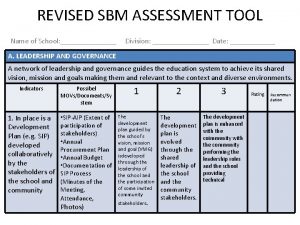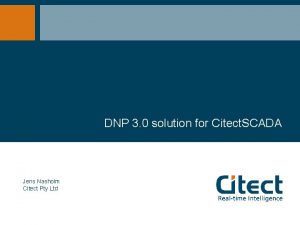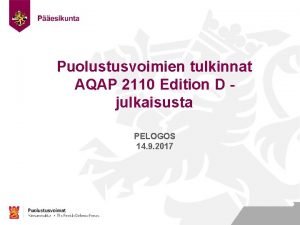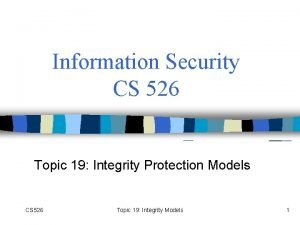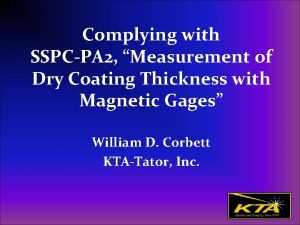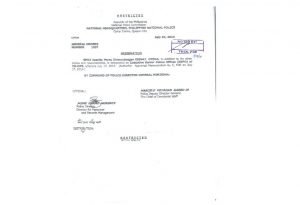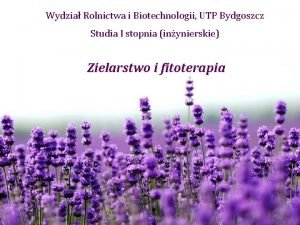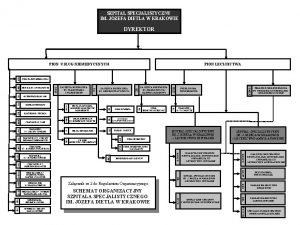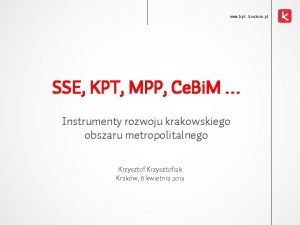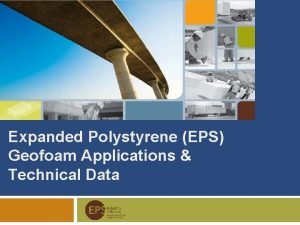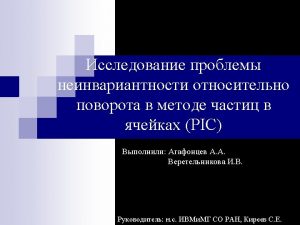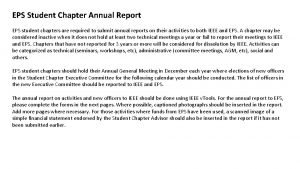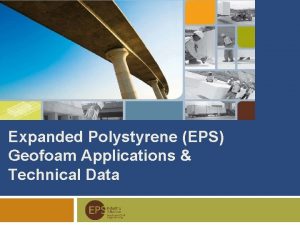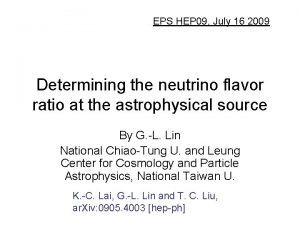EPS 2009 Krakow 16 22 July 2009 Latest






























- Slides: 30

EPS 2009, Krakow 16 -22 July 2009 Latest results from the PAMELA experiment Oscar Adriani University of Florence INFN – Florence, Italy On behalf of the PAMELA collaboration

The PAMELA collaboration Italy: Bari Florence Frascati Naples Rome Trieste CNR, Florence Russia: Moscow St. Petersburg Germany: Sweden: Siegen KTH, Stockholm Oscar Adriani EPS 2009

Pamela’s scientific objectives ü Study antiparticles in cosmic rays ü ü ü Search for antimatter Search for dark matter (e+ and pbar spectra) Study cosmic-ray propagation Study solar physics and solar modulation Study the electron spectrum (local sources? ) Antinucleosyntesis Evaporation of primordial black holes WIMP dark-matter annihilation in the galactic halo Background: CR interaction with ISM CR + ISM p-bar + … Oscar Adriani EPS 2009

PAMELA nominal capabilities • Antiprotons Energy range 80 Me. V - 190 Ge. V • Positrons 50 Me. V – 300 Ge. V • Electrons up to 500 Ge. V • Protons up to 1000 Ge. V • Electrons+positrons up to 2 Te. V (from calorimeter) • Light Nuclei up to 200 Ge. V/n He/Be/C • Anti. Nuclei search Simultaneous measurement of many cosmic-ray species New energy range Unprecedented statistics Oscar Adriani EPS 2009

PAMELA detectors Main requirements high-sensitivity antiparticle identification and precise momentum me + Time-Of-Flight plastic scintillators + PMT: - Trigger - Albedo rejection; - Mass identification up to 1 Ge. V; - Charge identification from d. E/d. X. GF: 21. 5 cm 2 sr Mass: 470 kg Size: 130 x 70 cm 3 Power Budget: 360 W Electromagnetic calorimeter W/Si sampling (16. 3 X 0, 0. 6 λI) - Discrimination e+ / p, antip / e(shower topology) - Direct E measurement for Spectrometer emicrostrip silicon tracking system + permanent magnet Neutron detector It provides: 3 He Tubes: - Magnetic rigidity R = pc/Ze - Charge e/h sign - High-energy - Charge value from d. E/dx discrimination Oscar Adriani EPS 2009

PAMELA milestones • Launch from Baikonur: June 15 th 2006, 0800 UTC. • Power On: June 21 st 2006, 0300 UTC. • Detectors operated as expected after launch • PAMELA in continuous data-taking mode since commissioning phase ended on July 11 th 2006 • As of now: • 1128 days in orbit • Trigger rate ~ 25 Hz • Data taking ~73% live-time • >13 TByte of raw data downlinked • >109 triggers recorded and under analysis Oscar Adriani EPS 2009

Particle identification with PAMELA Time-of-flight: trigger, albedo rejection, mass determination (up to 1 Ge. V) Bending in spectrometer: sign of charge Ionisation energy loss (d. E/dx): magnitude of charge Antiproton (NB: e-/p ~ 102) Interaction pattern in calorimeter: electron-like or proton-like, electron energy Positron + ~103 -4) (NB: p/e Oscar Adriani EPS 2009

Some short hints on ‘additional’ physics items + (≠ pbar, e ) A long dedicated talk will be necessary, sorry! Oscar Adriani EPS 2009

Proton and Helium spectra, July 2006 Preliminary Very high statistics over a wide energy range Precise measurement of spectral shape Possibility to study time variations and transient phenomena Oscar Adriani EPS 2009

ar y in el im pr pr el im in ar y PAMELA preliminary results Secondaries/Primaries Be/C pr el im in ar y Li/C B/C Oscar Adriani EPS 2009

Geomagnetic cutoff (statistical errors only) Magnetic poles ( galactic protons) Geomagnetic cutoff (GV/c) 0. 4 to 0. 5 1. 0 to 1. 5 to 2. 0 2 to 4 4 to 7 7 to 10 10 to 14 > 14 Secondary reentrant-albedo protons • Up-ward going albedo excluded • SAA excluded Magnetic equator Oscar Adriani EPS 2009

Solar modulation Interstellar spectrum (statistical errors only) Decreasing solar activity Increasing GCR flux July 2006 August 2007 February 2008 PAMELA Ground neutron monitor sun-spot number Oscar Adriani EPS 2009

Antiprotons Oscar Adriani EPS 2009

High-energy antiproton analysis – single track inside TRK – no multiple hits in S 1+S 2 – no activity in CARD+CAT CA RD S 1 CAT S 2 . TOF TRK CAS Event selected from 950 days of data Spectrometer is the crucial device Basic requirements: • Clean pattern inside the apparatus • Minimal track requirements – energy-dependent cut on track c 2 (~95% efficiency) – consistency among TRK, TOF and CAL spatial information • Galactic particle S 3 CAL S 4 ND • measured rigidity above geomagnetic cutoff • Down-ward going particle (no albedo) Oscar Adriani EPS 2009

Antiproton identification -1 Z +1 p (+ e+) p e- (+ p-bar) proton-consistency cuts (d. E/dx vs R and b vs R) “spillover” p electron-rejection cuts based on calorimeterpattern topology p-bar 5 GV 1 GV Oscar Adriani EPS 2009

Energy/Rigidity match Energy measured in Calo/ Deflection in Tracker (MIP/GV) Calorimeter Selection e- Strong track requirements: MDR > 850 GV e+ ‘Electrons’ p p, d ‘Hadrons’ Tracker Identification Protons (& spillover) Antiprotons Minimal track requirements Oscar Adriani EPS 2009

Antiproton to proton ratio preliminary Oscar Adriani EPS 2009

Antiproton Flux Preliminary 26/06/2009 18 Oscar Adriani EPS 2009

Positrons Oscar Adriani EPS 2009

Positron identification The main difficulty for the positron measurement is the interacting-proton background: • fluctuations in hadronic shower development p 0 gg might mimic pure e. m. showers • proton spectrum harder than positron p/e+ increase for increasing energy Energy measured in Calo/ Deflection in Tracker (MIP/GV) Energy-rigidity match e- ( e+ ) ‘electrons’ p-bar p ‘hadrons’ Oscar Adriani EPS 2009

High energy positron analysis • ~500 days of collected data • Calorimeter plays a crucial role • Identification based on: – 51 GV positron Shower topology • lateral and longitudinal profile • shower starting point – Total detected energy • energy-rigidity match • 80 GV proton Analysis key points: – Tuning/check of selection criteria with: • • • – test-beam data simulation flight data – d. E/dx from SPE – neutron yield from ND Selection of pure proton sample from flight data (“presampler” method) Final results make NON USE of test-beam and/or simulation calibrations. The measurement is based only on flight data with the background-estimation method Oscar Adriani EPS 2009

The “pre-sampler” method Selection of a pure sample of protons from flight data CALORIMETER: 22 W planes: 16. 3 X 0 POSITRON SELECTION 20 W planes: ≈15 X 0 2 W planes: ≈1. 5 X 0 PROTON SELECTION 20 W planes: ≈15 X 0 Oscar Adriani EPS 2009

Proton background evaluation Rigidity: 20 -28 GV Fraction of charge released along the calorimeter track (left, hit, right) + Constraints on: p (pre-sampler) Energymomentum match Shower startingpoint p Estimation of contamination directly from the data!!!! ee+- Topological variable Oscar Adriani EPS 2009

Positron to all electron ratio Nature 458 (2009) 607 Moskalenko & Strong, 1998 Oscar Adriani EPS 2009

During first week after PAMELA results posted on ar. Xiv (October 28 th 2008) Nature 458 (2009) 607, Astro-ph 0810. 4995 1. 0808. 3725 DM 2. 0808. 3867 DM 3. 0809. 2409 DM 4. PA 0810. 2784 Pulsar ME DM / pulsar 275. 9 0810. 4846 LA 6. pa 0810. 5292 per data. DM cite s up DM 7. 0810. 5344 db 8. 0810. 5167 to. DM now y 9. 0810. 5304 DM ! 10. 0810. 5397 DM 11. 0810. 5557 DM 12. 0810. 4147 DM 13. 0811. 0250 DM 14. 0811. 0477 DM Oscar Adriani EPS 2009

PAMELA Positron Fraction Pulsar Component Yüksel et al. 08 KKDM (mass 300 Ge. V) Hooper & Profumo 07 Pulsar Component Atoyan et al. 95 Pulsar Component Zhang & Cheng 01 Secondary production Moskalenko & Strong 98 Oscar Adriani EPS 2009

Electrons Oscar Adriani EPS 2009

Basic electron selection criteria Relativistic Z=-1 galactic particles with clean pattern inside the apparatus Electrons + Background: Antiprotons Spillover protons Tracker selection: Spillover cuts R < MDR/c Calorimeter selection: (Loose) calorimeter cuts high and ~constant selection efficiency Energy/Rigidity match Oscar Adriani EPS 2009

Pamela electron Flux Pr eli mi na ry Oscar Adriani EPS 2009

Conclusions • PAMELA is continously taking data since July 2006 • We presented results from ~500/950 days of data: Antiproton charge ratio and antiproton flux (~0. 1 Ge. V ÷ 180 Ge. V) no evident deviations from secondary expectations Positron charge ratio (~1 Ge. V ÷ 100 Ge. V) Clear excess with respect to secondary production models Charge dependent modulation effects More data to come at lower and higher energies (up to 300 Ge. V) Preliminary Electron spectrum up to 200 Ge. V Galactic primary proton and He spectra Preliminary galactic secondary-to-primary ratio (Li/C, Be/C) • Analysis ongoing to measure the e- spectrum up to ~500 Ge. V, e+ spectrum up to ~300 Ge. V and all electron (e- + e+) spectrum up to ~1 Te. V. PAMELA is really providing significant experimental results, which help and will help in understanding CR origin and propagation Pamela mission has been officially extended up to 2011 More new and exciting results will certainly come in the next few years! Oscar Adriani EPS 2009
 July 30 2009 nasa
July 30 2009 nasa Latest trands
Latest trands New irpwm 2021
New irpwm 2021 Revised sbm assessment tool 2021
Revised sbm assessment tool 2021 Ms word latest version
Ms word latest version Andrew heywood global politics
Andrew heywood global politics Latest updates from upstu
Latest updates from upstu Citect scada latest version
Citect scada latest version Aqap
Aqap Betty wanted to know when i had come
Betty wanted to know when i had come Latest subject is integrity
Latest subject is integrity Electronics and information technology department odisha
Electronics and information technology department odisha Florence and the machine video
Florence and the machine video Ubbl ventilation
Ubbl ventilation Relocation trends
Relocation trends Oracle apex 19 new features
Oracle apex 19 new features Prayer items for the philippines
Prayer items for the philippines Structure of letter writing
Structure of letter writing Sspc-pa 2
Sspc-pa 2 Dd 577 usmc
Dd 577 usmc Is 10262
Is 10262 Sgrrits dehradun
Sgrrits dehradun Latest nbc code
Latest nbc code Pnp organizational structure line of authority
Pnp organizational structure line of authority Wco data model latest version
Wco data model latest version Zielarstwo studia kraków
Zielarstwo studia kraków Szpital specjalistyczny im. józefa dietla kraków
Szpital specjalistyczny im. józefa dietla kraków [email protected]
[email protected] Wciągnięte brodawki kraków
Wciągnięte brodawki kraków Mpp kraków
Mpp kraków Certyfikat jcj
Certyfikat jcj



